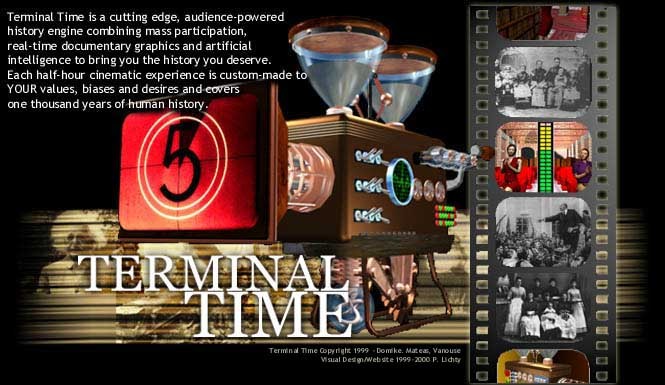


Terminal Time (1999)
Terminal Time is a documentary by Michael Mateas, Steffi Domike, and Paul Vanouse that is assembled in real-time based on audience feedback during the screening. This is more than just branching: behind the scenes there’s a complex system that takes the raw footage and assembles it into a coherent story that reflects the biases of the audience.
The original paper that describes it has examples of its inner workings, including the code for some of the events.
From my point of view, one of the more important insights from Terminal Time is the search for a balance that is neither mostly hand-authored, nor completely emergent, instead seeking a middle ground:
Much of the architectural work that went into the iterative prototyping of Terminal Time was a search for an architecture providing authorial “hooks” on the right level of abstraction: low-level enough to allow significant combinatorial possibilities and the capability for surprise, yet high-level enough to allow the exertion of authorial control over multiple levels of the story construction process.
I think that following this principle is key in creating procedurally generated experiences that are dynamic but still carry meaning. You could generate everything with an emergent system (and those are often interesting experiments) but art takes focus. It’s often as much about what you leave out as it is about what you put in.
The creators mostly seem to describe Terminal Time as an AI project, rather than calling it procedural generation. But I think it fits comfortably under both umbrellas.
